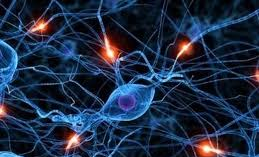In a previous post, I summarized the major neurotransmitters along with their functions and diseases associated with dysfunction or imbalance. It is always a risky exercise to put forth such information as it is very easy to draw erroneous conclusions from looking at such data.
For instance, someone looking at this information that has depression may conclude that they have an imbalance with serotonin and simply need to take a serotonin precursor (such as 5-HTP or L-tryptophan) or a substance that modifies serotonin release or absorption (such as St. John’s Wort or an SSRI medication) to alleviate their depression. In practice, this approach seldom works.
There are many reasons, but the most straightforward is that neurotransmitters affect one another, and often, not in ways we expect. For instance, the following chart details how various neurotransmitters and amino acids affect one another:
Illustration taken from Marty Hinz, MD with permission.
Thus, simply taking one amino acid, or an improper blend of amino acids, can actually make an underlying neurotransmitter imbalance worse rather than better.
In addition, every person’s underlying neurotransmitter imbalances are different and therefore, the approach used to correct those imbalances must be tailored to each person’s unique situation. Said differently, while it is true that some people suffer from depression because of an imbalance with serotonin, there are also significant numbers of people that suffer from depression that have imbalances with norepinephrine and dopamine and/or have imbalances between dopamine, norepinephrine and/or serotonin that are responsible for their chronically low mood.
Because of these reasons, it is vitally important for any person that suffers from disorders associated with neurotransmitter imbalance to work with a provider that is skilled in the use of amino acid therapy so they can achieve the targeted, tailored recommendations they need to be well.



